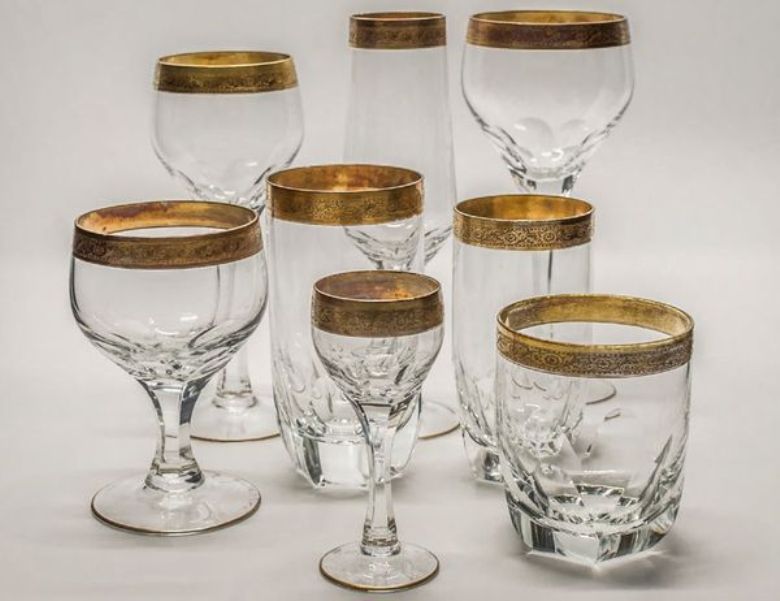An exhibition at the National Museum of Decorative Arts of Cuba, known as Moser and Oroplastic Decoration, is showcasing a Leo Moser-designed table service from 1916, featuring golden decoration.
This presentation is distinguished by its thin glass walls that are cut into six facets, the papal cut, that keep the proportions of the piece intact while in perfect harmony with the oroplastic decoration based on floral motifs.
According to Lidis Nuvia Rodríguez Díaz, an expert, Moser is perceived as the pinnacle of opulence in glassware by numerous individuals. His exquisite technique, decomposition into planes and the fabled colours have gained him this reputation and, after 160 years of production, remain in the public’s taste.
Leo Moser is recognised as one of the indispensable figures in the company’s history. The imprint of the designer has become one of the keys to his fame, creating harmonious, well-structured pieces that have become icons of glassware in the world. The use of colour, transparency, deep carving and bold designs are his legacy. Oroplastic decoration is one of his most remarkable achievements, according to Rodríguez Díaz’s text.

Moser glass is simply unique
In the exclusivity of its technique, the product is unique, with precise designs and dimensions. The contrast of the gold on the glass gives the pieces a unique beauty. The themes are varied, ranging from sophisticated battle scenes with centaurs and Amazons to the most delicate floral motifs with palmettes and acanthus leaves. Each object is unique and is handmade, with around 18 people involved in the production of a single piece.
One of the production lines that guarantee the brand’s fame is the tableware, developed from designs based on functionality and elegance to offer the customer comfort and safety. The Splendid, Lady Hamilton and Copenhagen services are famous for their exquisite cuts in transparent glass decorated with oroplastic.
Translated by Luis E. Amador Dominguez


Deje un comentario